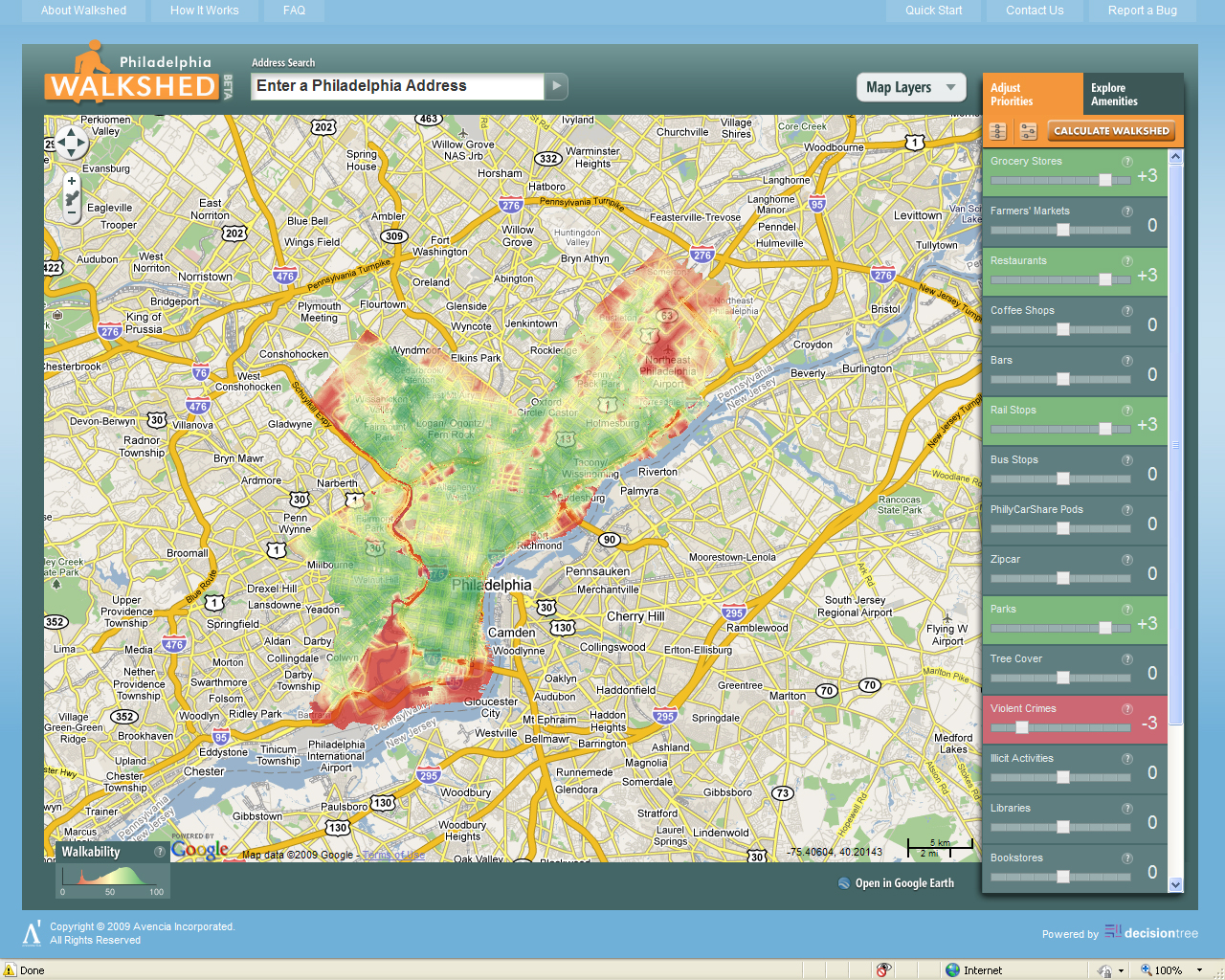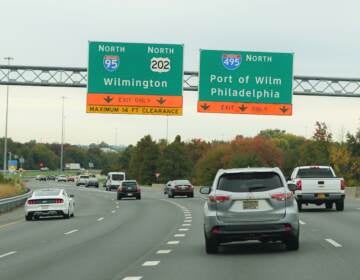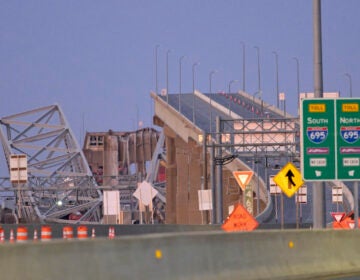Avencia launching Walkshed Philadelphia

In conjunction with Walk21, the 10th International Conference on Walking and Livable Communities (New York, Oct. 7-9), Avencia is launching Walkshed Philadelphia, an online application that enables the public to calculate and map the walkability of any Philadelphia neighborhood, based on individual preferences.
Why is this important for Philadelphia and cities around the world? One might say that more walkable cities results in lower carbon emissions and makes citizens healthier. But apart from these obvious reasons, a recent report published in August, “Walking the Walk: How Walkability Raises Home Values in U.S. Cities” by CEOs for Cities, suggests that “more than just a pleasant amenity, the walkability of cities translates directly into increases in home values.”
Walkable communities tend to have larger concentrations of restaurants, shops, services, parks, and open space; better access to museums and other cultural venues; as well as other amenities that contribute to less car traffic and more social interactions. Greater foot traffic also contributes to lower crime rates. Moreover, as people come back to center cities to be closer to these amenities, incomes in these neighborhoods tend to rise. While it is not clear if higher housing prices mean that a neighborhood is more livable, higher prices certainly reflect a desire to live in such neighborhoods. So knowing which neighborhoods are more walkable has real value for realtors, retailers, small business owners, municipalities, and citizens alike.
Walkshed Philadelphia was inspired in part by Alan Durning of the Sightline Institute and Walk Score. Durning originated the concept of a “walkshed index” that scores a location based on the quantity and diversity of amenities within a one-mile radius. Walk Score was then the first to implement Durning’s idea by building an online application to automatically score the walkability an address based on its proximity to various amenities. Walkshed builds on these efforts. It was built by Aaron Ogle, one of Avencia’s software developers, as part of Avencia’s 10% research project program.
The way Walkshed Philadelphia varies lies in the calculation methodology that determines the actual walking distance to a variety of positive and negative assets instead of using “as-the-crow-flies” distances. In many cases, “as-the-crow-flies” distances are accurate enough, but that accuracy can degrade quickly with the presence of barriers (rivers, highways, etc.), disjointed street networks, or extreme topography. An amenity may only be a quarter mile as the crow flies, but being bound to the street grid can significantly increase that distance. Walkshed incorporates a concept of “friction” that reflects the relative ease or difficulty of walking through the streets. Buildings, highways, rivers and other barriers result in higher friction value while parks and sidewalks have lower friction values. The distance to each amenity is calculated based on this friction value.
Built on DecisionTree®, Avencia’s geographic planning and prioritization software, Walkshed also enables users to assign positive or negative weights to each amenity in the system. For example, one person might define walkability based on living close to a library, coffee shops, and a shopping center while another person might define it as being close to public transit, carshare locations and a grocery store. Thanks to DecisionTree, Walkshed enables each person to calculate the locations that best meet their weighted criteria and returns a map that reflects these scenarios “on the fly”.
With tools like Walkshed and Walk Score, municipalities and citizens alike have a real opportunity to re-think urban life, make better real estate decisions, influence policies on land use, zoning and planning decisions, as well as make a real difference at the neighborhood level as to what types of businesses they want to attract to make their communities more livable, healthier, and more valuable.
WHYY is your source for fact-based, in-depth journalism and information. As a nonprofit organization, we rely on financial support from readers like you. Please give today.






